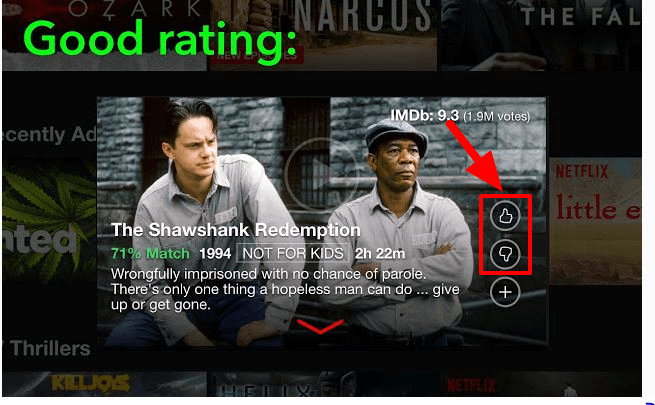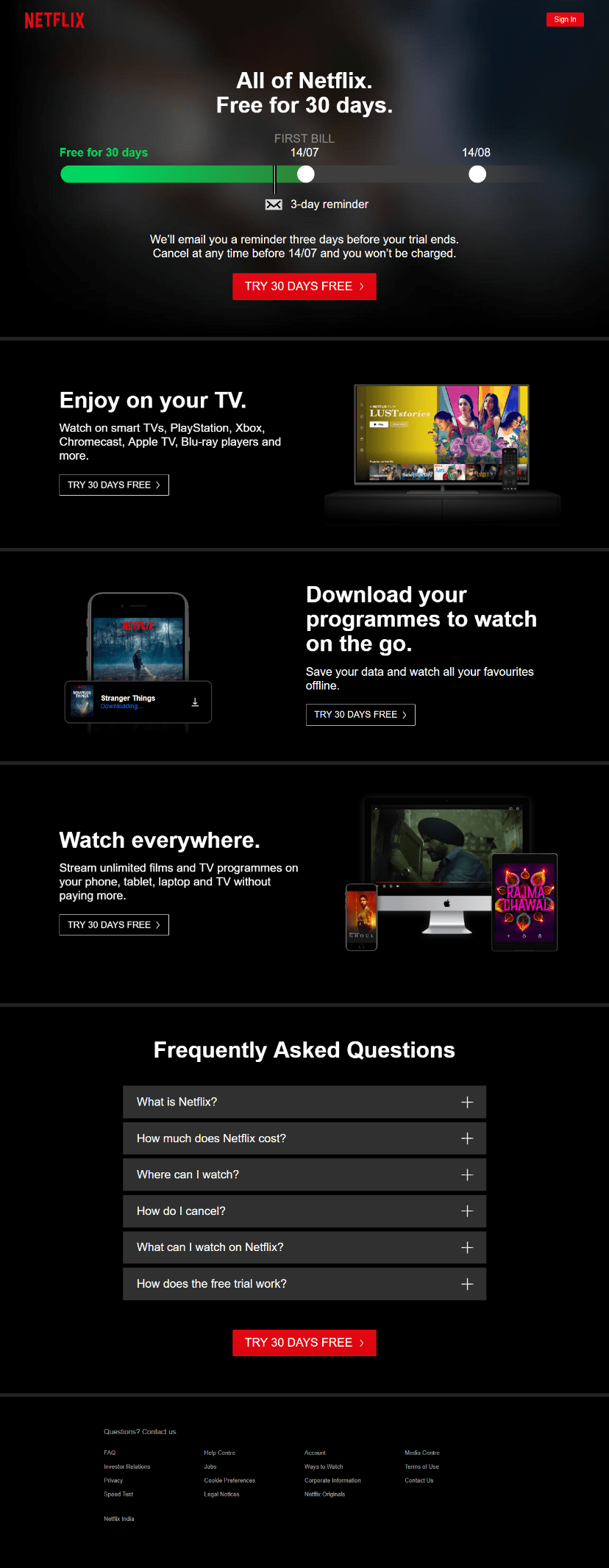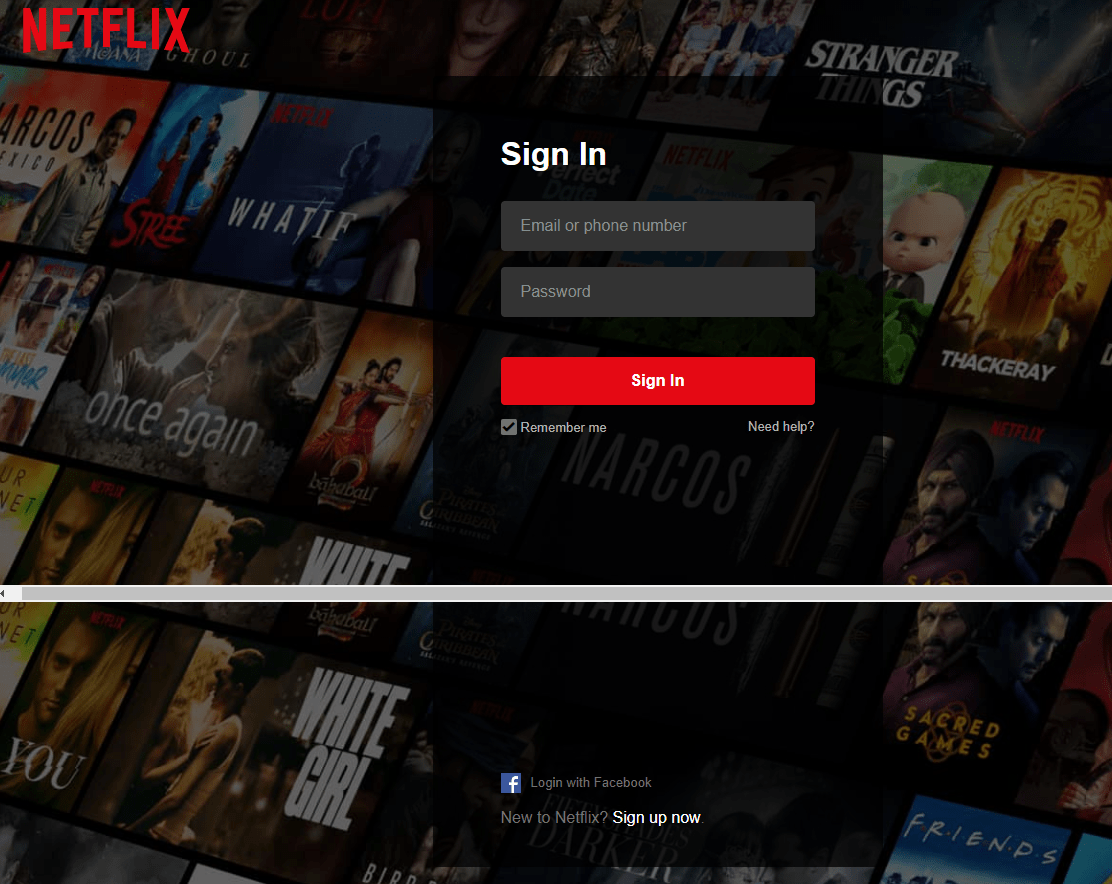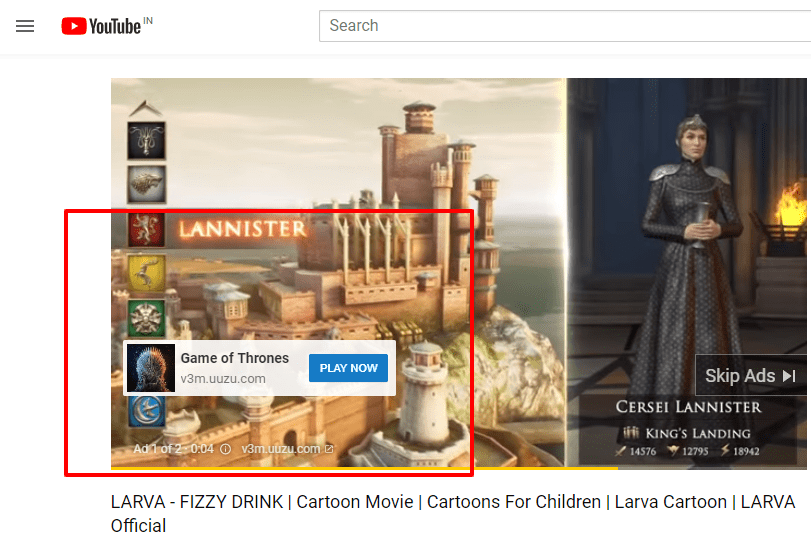How did Netflix get there? The streaming world before they enter the market was largely uncharted. Purchasing streaming rights from various production companies is not as easy as it sounds. It can get pricey leaving original programming as the most affordable alternative to take. However, not all streaming services are created the same. Netflix Business Model has somehow managed to stand head and shoulders for a variety of reasons.
This is one common phrase we heard often- “Netflix and chill” But why Netflix? Why not Amazon Prime or Hulu? There are plenty of websites and applications that allow viewers to watch movies and TV shows. Interestingly, many services even have a broader range of selection than Netflix.
Over the past years, Netflix has grown exponentially in popularity and figures, leaving other streaming business and even regular TV network in the dust. Wondering How to start a streaming service like Netflix?
Before that, let’s look at what makes Netflix a winning element.
Storytelling
The way Netflix creates content for a show is with full of narrative twists, ten episodes long story arcs, and all of these are aligned with the company’s main metric- user subscription. The ways the content is created at is aligning with maximizing advertisement support during the time a show is aired. However, Netflix ensures that the best content is delivered to its viewers, and without Ad interruptions.
Different metrics
Netflix always follows a different method of evaluating success than other traditional networks. Netflix measures its success with valued hours, which is a variation of viewed hours. It accounts for a percentage of overall time spent watching shows on Netflix. For example, if one particular show is just the one a set of subscribers watch, and they pay off every month for the same, Netflix will consider that particular show valuable to them. Enjoyment is also another metric measured by Netflix.
It isn’t subject to ratings

While TV networks and movie studios rely greatly on ratings so as to hawk space to advertisers, Netflix purely runs on subscriptions. Which means the most significant economic metric for the network is, how much a movie or TV series contributes to its ability to get new sign-ups and retain the existing customers’.
However, the problem is that it’s a hard thing to measure. Internally, Netflix knows exactly how many people are streaming what movies and shows, and it utilizes the data to make the original programming better. Earlier, the services used to measure the quality of content with a 5-star rating, but later switched to thumbs up and thumbs down during the end.
5 Things You Should Know Before You Start a Streaming Website
Beyond any doubt, modern people entertain themselves with TV programs, movies, and series. All thanks to the internet, you will always have something worth your attention. Whatever your business objective areas, use case, and models are, it is your prerogative. How you are going to create an audience base, what kind of video content you are going to stream or what methods you are going to adapt to monetize the site.
However, as a start-up, what is the minimum feature set you need to build a video streaming service like Netflix?
1. Get a license for the content
When you are launching a business, of course, you have to follow guidelines and abide by the law. You need to obtain licenses for all types of content you plan to stream. There are 2 ways to get a license.
- You can rent the movie directly from the distributor authorized to grant a license.
- Contact the copyright holder directly.
Licensing may be restricted to specific regions and you have to find an appropriate license for content distribution in your region.
2. Focus on User-facing features
You are building a platform to unite video content creators and viewers. Your role is to ensure website administration and 24/7 support. The ultimate goal is to delight your consumers and earn happy users on the go. To begin with, your streaming website must have universal functionality.
Homepage
The home page of your website is the place to inform your users what they are signing up for and the benefits they will find. Mesmerize them by the looks and the promises of entertainment you intend to offer. The home section must highlight TV shows, movies, and other categories of content customized according to the preference of each user.

Sign Up/Login
Registration and login are indispensable interactive elements of any video-on-demand service. Provide various ways for your users to sign up and log in to your website.
- Google login
- Facebook login
- Login by email or mobile number

You must also ensure there is a password recovery option.
Dashboard
After the home page, the significant section is user profile. It is nothing but a virtual; user profile to navigate through the entire journey. Not to mention, it’s an excellent place to retrieve insights if you think analytics wise.
Settings
Allow users to modify and control their level of privacy. Let them to toggle between privacy options and social platforms to broadcast to.
3. Choose a technology stack
Choosing a technology stack for your video streaming business can be quite challenging. The natural thing is to repeat the success of industry leaders like Netflix by following Netflix Business Model. But there is a catch.
– They are already much ahead of you, so can you catch up with them by using the same tools?
-They started it a while ago. Technology constantly evolves, there are much more efficient, smarter and cost-effective solutions in the market to start with.
-The circumstances are unique and so should be your business model.
Before you start developing a website or an app, it is important to determine which all the primary functions are. Start with MVP (Minimum viable product)) technique. This technique lets you outline a minimal feature set that is a must have to survive in the market. Next, you have to pick the complexity of the development from simple, mid-level and complex levels. Complex website and applications will have lots of functions and integrations to process heavy loads.
4. Video Streaming Protocols
If you are going to build a video streaming platform, you must look a bit deeper into the streaming technology. Most video content isn’t designed for streaming, a video streaming protocol is a standard delivery method to break the video into chunks, send to the viewer and reassemble it. This is different from compression technology. When you choose a protocol, look into factors like properties, quality, latency, etc.
Let have a look at the most popular protocols.
RTMP
Real-time messaging protocol or RTMP is a widely used protocol for real-time streaming. It has the least latency among other properties and is robust and universally supported. RTMP is a great streaming and data sharing solution to use between clients with a flash player.
MPEG-DASH
Moving Picture Experts Group Dynamic Adaptive Streaming over HTTP or MPEG-DASH a vendor-neutral standard that is compatible with almost all encoding formats. Due to its ability to adjust second-second, it can fix some long-standing technical issue with compression and delivery. It implements AI to choose segments and intervals in the multimedia content with the highest bitrate that can be downloaded for playback without buffering.
HTTP Live streaming or HLS protocol
HLS is the most robust and safest bet popular for delivering the best audience user experience. Originally created by Apple to drop flash from the iPhone, it is now supported on Android, smart TS, desktop, and iOS. HTML 5 video player also supports HLS natively, but not RTMP. It supports ABR streaming, H.265 codec that delivers the twice the video quality at the same file size.
WebRTC
Web real-time communication or WebRTC facilitates audio and video transmission between browsers in real time with no plugins or downloads. In fact, it is not a protocol but a protocol stack. It opens the door for live and end-end communications from any point- web pages, phones, automobiles or even appliances. Its simplicity and potential ubiquity make it ideal for video streaming, especially in the areas of peer-peer data exchange and teleconferencing.
5. Monetization
This is yet another important aspect- To make money with live streaming platforms and VOD streaming platforms. When it comes to revenue generating models, there are a few popular revenue models markets leaders follow.
Subscriptions
Users can subscribe to the service for a certain fee every month and access the service without Ads.

Netflix Business Model follows the same monetization approach.
Fermium- Free + premium
Some video streaming services use a combination of free and paid features. For instance, if you pay a certain fee, you can view the same content with fewer or no Ads, more storage and cross-platform support.
For example, YouTube. It offers both free streaming with Ads and premium streaming with no Ads and an exclusive catalog of content.
Ads
You can offer multimedia content to users for free, but with Ads playing in between. Ads can launch when your website is launched and can change as the number of advertisers and they pay increase. It is used by the platform like YouTube to monetize its business despite offering the content streaming for free to everyone.

Think of Scalability While developing Video streaming website
The smooth and continuous working of a video streaming platform greatly depends not just on the video streaming protocol but also on the architecture. The more audience you acquire; the more requests your server gets. Eventually, this can lead to glitches and even website crash. The most common and reliable way to solve the problem is to build a content delivery network (CDN). This involves creating multiple proxy servers with data centers in different locations with the same data.
With this, users from different countries will get quick access to data that was built on the other side of the world with minimum delay. A great content delivery network helps to distribute the load among different servers by reducing the likelihood of crashes.
You don’t need to build your own CDN and data centers. You can simply integrate the APIs from popular CDNs and Media servers. Even Netflix uses Amazon’s AWS to deliver high-quality content across the globe.
Conclusion
If you want to build a streaming business like Netflix or YouTube, don’t repeat the features provided by successful video services. Instead, gain inspiration from their functionalities and build an exclusive experience with improvement in content and video-on-demand service. Leverage the power of technology to showcase your creativity, add storytelling, etc. Create a digital space irresistible to creators and your potential users.
